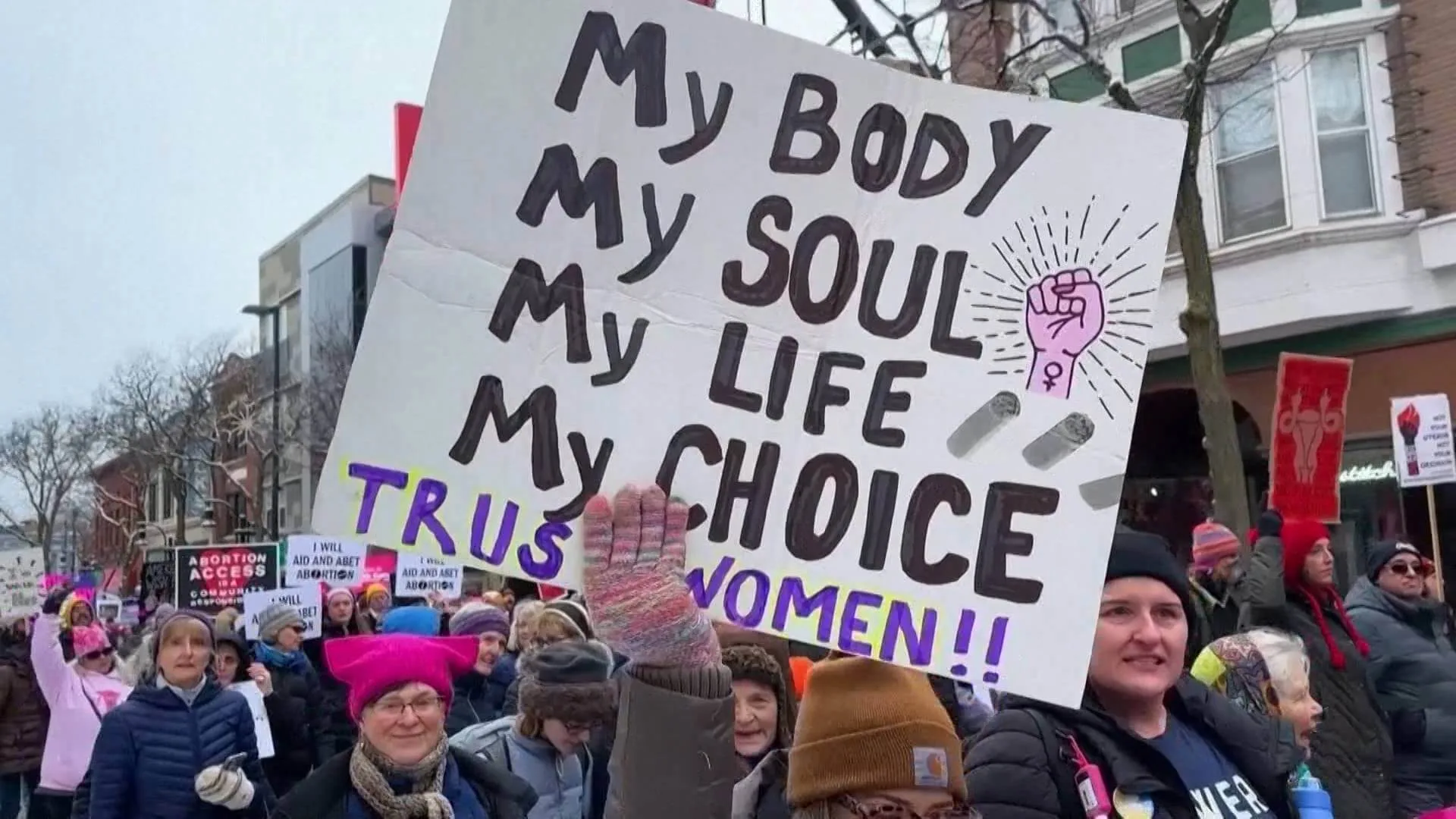
Why is this election different? What’s on the line? Since when do we vote for ‘nonpartisan’ judges? We answer all the questions many are too afraid to ask.
A very important election is quickly approaching: Tuesday, April 4.
During an average year, less than 20% of eligible voters turn out for a spring election in Wisconsin. But with so much on the line– from reproductive freedom to free and fair elections– we expect this year’s turnout to be higher.
RELATED: Why Wisconsin’s Supreme Court Race is “The Most Important Election in America”
Whether you’ve never missed an election or never voted before, we created this guide to help prepare you for Election Day. When you’re done, please share it with friends and family members to encourage them to vote, too. This spring, the stakes are too high to stay home.
Since when do we vote for Supreme Court justices?
Since Wisconsin’s highest court was established in 1848. Unlike the US Supreme Court justices, who are nominated by the sitting president, confirmed by the US Senate, and given lifelong terms, Wisconsin’s state Supreme Court is made up of seven justices who are elected in statewide, non-partisan elections to a 10-year term. Only one justice can be elected a year.

Who’s running for the Supreme Court this year?
Milwaukee County Judge Janet Protasiewicz and former state Supreme Court Justice Daniel Kelly are running for the state court’s empty seat, previously occupied by retiring Justice Pat Roggensack.
How do I choose between the candidates, especially if they’re “nonpartisan”?
They’re technically nonpartisan. In actuality, this year’s race is far from it. Protasiewicz is considered liberal, while Kelly is a conservative with Republican-leaning judicial records.
Here’s what this means: Protasiewicz is more inclined to rule in favor of reproductive freedom and a women’s right to have ownership over her own body as a case challenging Wisconsin’s 1849 abortion ban works its way through the courts. Kelly does not support such freedoms.
On cases regarding election laws, voting rights, and fair electoral maps, Protasiewicz is pro-democracy, promising to protect every Wisconsin adult’s right to vote and have their vote count. Kelly has ties to former President Donald Trump and has even leaned into Republican conspiracies about the legitimacy of the 2020 election.
What’s the current makeup of the Wisconsin Supreme Court?
With Roggensack’s retirement, three conservatives and three liberals remain on the bench. In the 2021-2022 session, an unprecedented 54% of cases were a 4-3 decision in favor of the conservatives. Between 1985 and 2020, 4-3 decisions never comprised more than 26% of court outcomes.
When did electing judges become so partisan? And why?
Within the last 20 years, and it all has to do with money. In 2003, outside groups spent just $27,000 on the Wisconsin Supreme Court race. By 2007, that number ballooned to $3.1 million, as right-wing groups shelled out more than $2.6 million to get a conservative on the state’s highest court.
That effort drew criticism from even Reagan-appointed US Supreme Court Justice Sandra Day O’Connor, who put it bluntly: “In too many states, judicial elections are becoming political prizefights where partisans and special interests seek to install judges who will answer to them instead of the law and the constitution.”
What else is on my ballot?
It depends on where you live. Click here to find out who and what else you’ll be voting for this spring.
When and where do I vote?
First, make sure you’re registered online at MyVote.wi.gov. The online system to register is open until 20 days before Election Day. After that, you can register in-person with your municipal clerk or you can register at the polls on Election Day. More information about registering to vote is available on Common Cause Wisconsin’s site.
Next, when to vote: April 4 in-person OR with an absentee ballot by mail OR in-person by absentee ballot at your clerk’s office (aka “early vote”). You can go to MyVote.wi.gov and make a request for your absentee ballot to be sent to you by mail in just seconds. In Wisconsin, any registered voter can vote absentee.
Finally, where to vote: click here to find your polling place if you’re choosing to vote in-person on Election Day. All Wisconsin polling locations are open from 7 a.m. to 8 p.m. on Election Day.
Do I have to bring anything?
Yes, a photo ID. Visit BringIt.wi.gov for more information about the types of ID that can be used to vote. You can also learn about how to get a free ID to use for voting.
READ MORE: How Wisconsin’s Supreme Court Election Will Impact Your Life for the Next 10+ Years
If you experience any problems at the polls or have questions, do not hesitate to call the Election Protection at 866-OUR-VOTE (866-687-8683) for support from nonpartisan election protection volunteers. They are there to help you navigate through any doubts or questions you may have.
Support Our Cause
Thank you for taking the time to read our work. Before you go, we hope you'll consider supporting our values-driven journalism, which has always strived to make clear what's really at stake for Wisconsinites and our future.
Since day one, our goal here at UpNorthNews has always been to empower people across the state with fact-based news and information. We believe that when people are armed with knowledge about what's happening in their local, state, and federal governments—including who is working on their behalf and who is actively trying to block efforts aimed at improving the daily lives of Wisconsin families—they will be inspired to become civically engaged.


This billionaire’s PAC is spreading a big lie about Tammy Baldwin, Medicare, and taxpayer savings
Restoration PAC, funded by Uline’s Richard Uihlein, twists the significance of forcing Big Pharma to negotiate for lower bulk pricing on Medicare...

New Biden rules deliver automatic cash refunds for canceled flights, ban surprise fees
In the aftermath of a canceled or delayed flight, there’s nothing less appealing than spending hours on the phone waiting to speak with an airline...

Opinion: It’s time for Congress to fight for small businesses instead of big corporations
May is National Small Business Month. Our elected leaders need to show leadership all year long. For the past 27 years I’ve been fortunate to pursue...

Biden makes 4 million more workers eligible for overtime pay
The Biden administration announced a new rule Tuesday to expand overtime pay for around 4 million lower-paid salaried employees nationwide. The...





